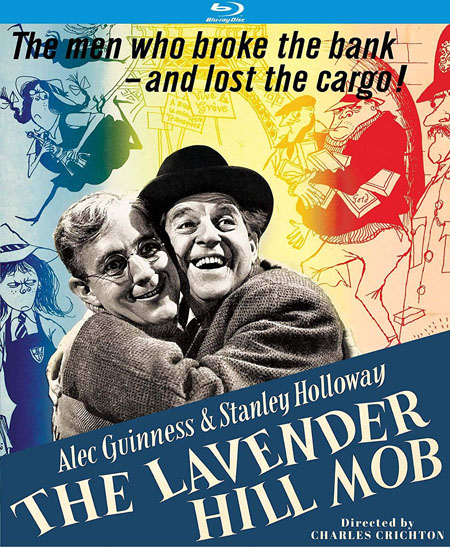
“EALING
EXQUISITENESSâ€
By
Raymond Benson
Ealing
Studios has a long history of greatness and is one of the finest motion picture
studios in Great Britain. While it is most well known for its post-war
comedies, several of which starred the inimitable Alec Guinness, the studio site
has been active since the silent era. When producer Michael Balcon took it over
in the late 1930s and renamed it Ealing, many successful pictures—both dramas
and comedies—were made under its banner. Ealing is still operating today and is
also the home of the Met Film School London.
The
Lavender Hill Mob,
released in 1951, is one of Ealing’s jewels in the crown, often cited as the
best of the bunch (arguably, as I personally favor The Ladykillers, but
only by a notch). Director Crighton helmed several of the Ealing
pictures, and, at age 77, was finally nominated for a Best Director Oscar for
his work on A Fish Called Wanda in 1988 (it was because of Crighton’s
work with the Ealing comedies that John Cleese hired the filmmaker for Fish).
Along with the presence of stars Alec Guinness and Stanley Holloway, perhaps
the most important ingredient of Lavender is the clever, ingenious
original screenplay by T.E.B. Clarke, who was nominated for and won the
Oscar in that category. Guinness also received a Best Actor nomination for his
role as a mild-mannered clerk who masterminds the heist of gold bullion from
the Bank of England.
Guinness
is Holland, who has been scheming how to snatch some of the gold he supervises.
He finally meets his answer in the form of Pendlebury (Holloway), who owns a
foundry that makes Eiffel Tower souvenirs sold in Paris. The idea is to smuggle
the gold in the form of paperweights to Paris, and then retrieve them there. As
with most heist movies, it all goes as planned—until it doesn’t.
The
movie is a delight from beginning to end, but the big belly laughs are saved
for the uproarious climax as the police are chasing our lovable criminals
through the London streets. Both Guinness and Holloway are superb. Keep an eye
out for walk-on appearances by the likes of Audrey Hepburn, Robert Shaw (his
first film), Patricia Garwood (as a child), and Valerie Singleton (also as a
child, uncredited).
Kino
Lorber presents a beautifully restored 1920x1080p transfer that looks pristine
and sharp. The erudite audio commentary by film historian and author Jeremy Arnold
is full of anecdotes and observations that enlighten one’s enjoyment of the
picture. Supplements include a brief introduction by Martin Scorsese, a very
interesting TV interview (on Britain’s Good Morning program) of writer
T.E.B. Clarke, an audio interview with Creighton (a bit hard to hear—turn up
the volume!), and the theatrical trailer.
The
Lavender Hill Mob is
not only one of the most outstanding British comedies, it is indeed one of the
most exquisite motion pictures made anywhere, anytime. A must-have, but don’t
steal it—you’ll get caught!
CLICK HERE TO ORDER FROM AMAZON